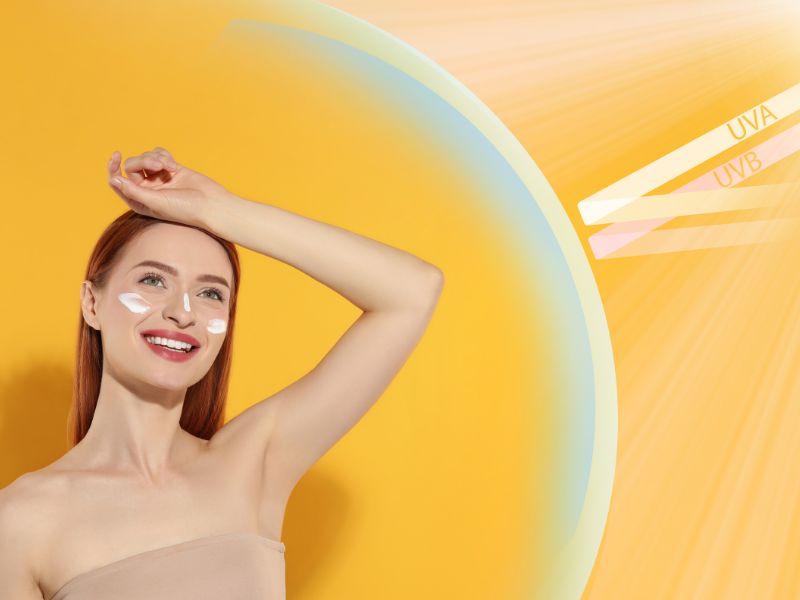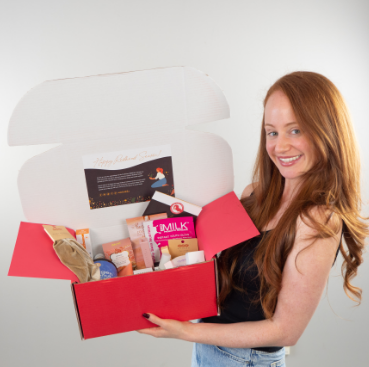In a recent post on Mother.ly, Dermatologist Ava Shamban shared some interesting sunscreen information and a few “rules” when it comes to sun protection. As redheads, we love learning new sunscreen info, and thought our redhead readers would find these “rules” interesting as well:
1. Wear sunscreen every single day
Dr. Shamban recommends wearing SPF daily, and swears by “sunscreen 365”. She also notes sunscreen should be reapplied every 60-90 minutes.
2. Eat your sunscreen
Sun protection can be found in foods, and Dr. Shabam recommends adding those foods to your diet if they aren’t already.
Read: Edible Sunscreen: How To Protect Your Redhead Skin from the Inside Out
3. Protect your scalp
“Scalp is skin too,” Dr. Shaban says. “Neglecting your scalp can lead to an awful scalp sunburn and sun damage.”
Read: Do Redheads Need to Wear Scalp Sunscreen?
4. Toss old sunscreen
Sunscreen expires, and although the shelf life for most sunscreen is several years, it’s best to toss it out if you’re unsure.
5. Store your sunscreen properly
In addition to tossing expired sunscreen, Dr. Shamban reminds us to be smart about SPF storage. Always keep sunscreen in a cool, dry place because it is essential for maintaining its effectiveness and stability. Here’s why it’s important:
1. Preservation of Active Ingredients: Sunscreen contains active ingredients that protect your skin from harmful UV rays. Exposure to heat and moisture can degrade these ingredients over time, reducing the sunscreen’s effectiveness.
2. Preventing Spoilage: High temperatures and humidity can cause sunscreen to spoil, leading to changes in texture, consistency, and smell. When sunscreen spoils, it may not provide the intended protection and can potentially irritate your skin.
3. Avoiding Separation: Extreme temperatures can cause the ingredients in sunscreen to separate, resulting in an inconsistent product. This separation can make it difficult to apply the sunscreen evenly, leading to uneven protection.
4. Prolonged Shelf Life: To maximize the effectiveness of your sunscreen, store it in a cool, dry location, away from direct sunlight and high temperatures. Additionally, always check the expiration date on the sunscreen bottle and avoid using it past that date, as the active ingredients may have degraded, reducing its protective abilities.
6. Wear sunscreen inside
Dr. Shamban touches on something many people forget, which is that the glass windows in our homes and cars only protect us from so much; using SPF inside is still a must.
Read: Why Redheads Need to Wear Sunscreen Indoors
7. SPF 30+
It’s recommended you always use an SPF above 30. Dr. Shamban says that between 30 and 50 is optimal:
SPF 30-50 is recommended because it provides effective protection against the harmful effects of the sun’s ultraviolet (UV) radiation. Here are some reasons why you should use SPF 30-50 sunscreen:
1. Enhanced Sunburn Protection: SPF 30 blocks approximately 97% of UVB rays, and SPF 50 blocks around 98%. Both offer significantly better protection than lower SPF levels, reducing the risk of sunburn.
2. Protection against Skin Damage: SPF 30-50 helps protect your skin from UV-induced damage, including premature aging, wrinkles, and dark spots caused by UVA radiation.
3. Reduced Risk of Skin Cancer: Regularly using SPF 30-50 sunscreen can lower your risk of developing skin cancer, including melanoma, the most dangerous form of skin cancer.
4. Extended Sun Exposure: Higher SPF levels allow for more extended periods of sun exposure without burning, but it’s still essential to reapply sunscreen every two hours, especially after swimming or sweating.
5. Skin Types and Conditions: SPF 30-50 is suitable for most skin types and conditions, providing a good balance between protection and ease of use.
Remember, regardless of the SPF level, it’s essential to apply sunscreen generously and reapply regularly for effective protection against the sun’s harmful rays. Additionally, it’s a good idea to seek shade, wear protective clothing, and use sunglasses to further protect your skin from the sun’s effects.
8. Opt for broad-spectrum
Broad spectrum is best since it protects our skin from both UVA and UVB rays.
Broad-spectrum SPF (Sun Protection Factor) refers to a type of sunscreen or sunblock that provides protection against both UVA and UVB rays from the sun. UVA rays can prematurely age the skin and lead to long-term damage, while UVB rays are responsible for causing sunburn. Broad-spectrum SPF products offer more comprehensive protection, reducing the risk of sunburn and helping to prevent skin damage and skin cancer caused by prolonged sun exposure.
9. You need more than SPF in makeup
While SPF in makeup is good, it’s often not enough. Usually, the SPF is 15 or below, and since we want it to be above 30, you need another layer of face sunscreen.
Read: Does Makeup With SPF Provide Adequate Sun Protection?
10. Not all sunscreen is waterproof
Dr. Shamban notes that many sunscreens aren’t waterproof, and should always be checked before hopping in the pool.
Waterproof sunscreen refers to a type of sunscreen that provides protection even when exposed to water. It is designed to be more water-resistant than regular sunscreen, making it suitable for activities where you are likely to be in contact with water, such as swimming or water sports.
However, it’s essential to note that no sunscreen is entirely waterproof or sweatproof. Over time, water and sweat can wash away or reduce the effectiveness of the sunscreen’s active ingredients. To maintain protection, it’s essential to reapply waterproof sunscreen after swimming, sweating, or towel-drying, as indicated on the product label.
The term “waterproof” has been replaced with “water-resistant” on sunscreen labels, following regulations from organizations like the U.S. Food and Drug Administration (FDA) and the European Commission. Sunscreens are now labeled with specific water-resistant durations, such as 40 or 80 minutes, indicating how long the sunscreen remains effective while in contact with water before needing to be reapplied.
Rock it like a Redhead!



